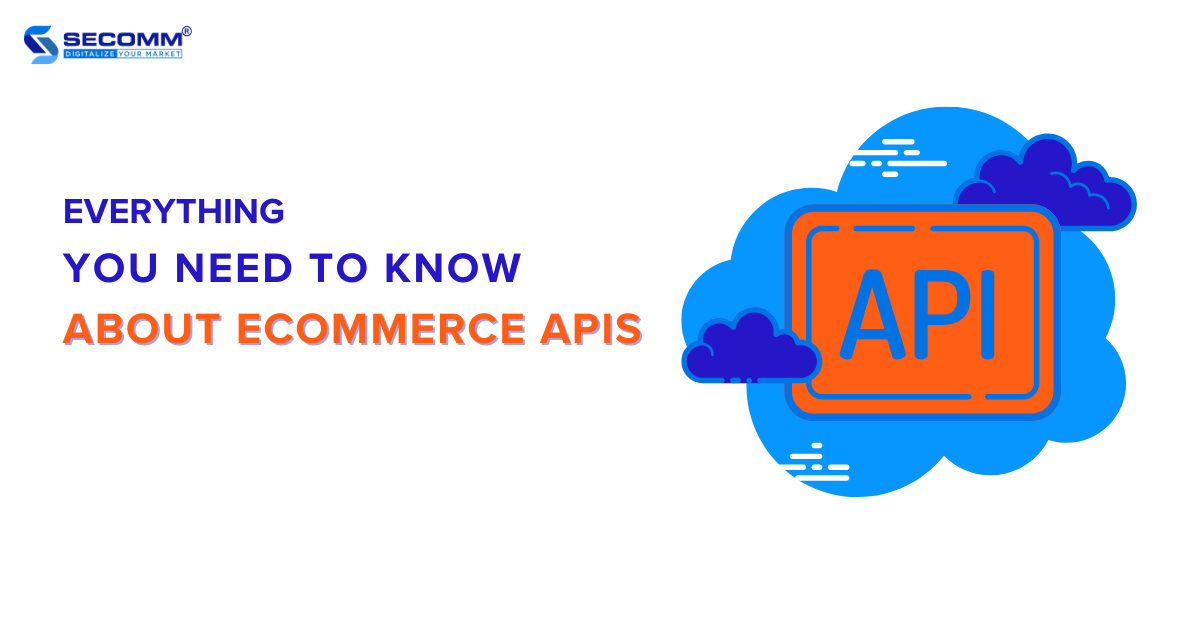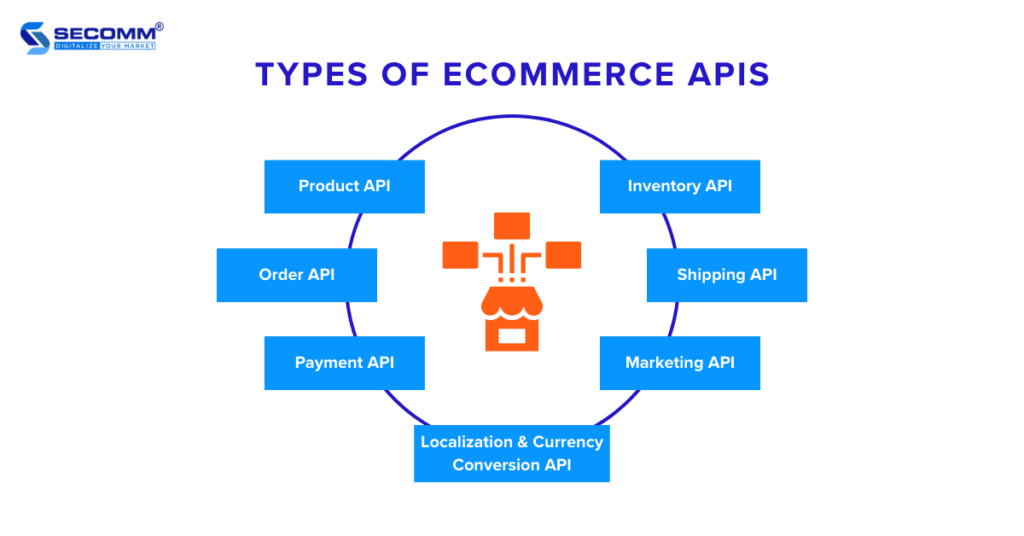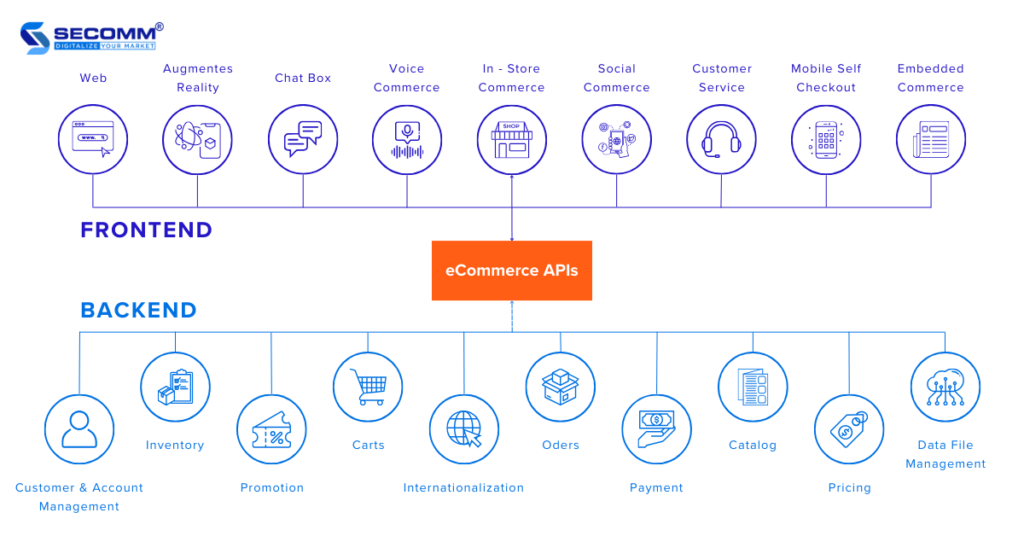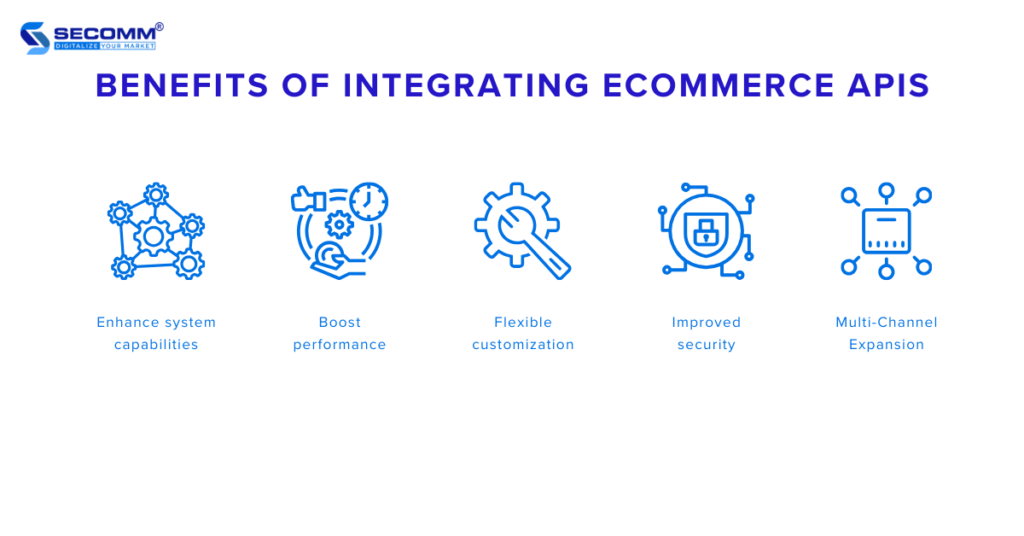It seems we can’t find what you’re looking for. Perhaps searching can help.


Tag: ecommerce api





EVERYTHING YOU NEED TO KNOW ABOUT ECOMMERCE APIs
Businesses going headless aim to integrate with third-party applications or services to extend capabilities, boost performance, and enhance the flexibility of their eCommerce systems. Therefore, they have to understand eCommerce APIs or application programming interfaces.
This article will provide a brief overview of what eCommerce APIs are, how they work, the types, and roles for going headless, and the advantages gained through their integration.
Learn more: What is Headless Commerce?
What are eCommerce APIs?
eCommerce APIs are application programming interfaces (APIs) that enable external applications and systems to access and interact with the functionalities and data of an eCommerce platform.
For example, an eCommerce API allows businesses to access product information, place orders, handle payments, manage inventory, or integrate with third-party services such as shipping, analytics, email marketing, and delivery.
How do eCommerce APIs work?
They operate based on a request-and-response model. When an application or system intends to access or perform a function on the eCommerce system, it sends a request to the API through an HTTP method such as GET, POST, PUT, or DELETE.
This request contains information like the URL address of the API and necessary data. Then, eCommerce APIs process the request and respond to the application or system that initiated the preceding request. This response includes an HTTP code indicating the outcome of the request (success or failure) and may contain data in formats like JSON, XML, etc.
APIs in the field of eCommerce are often published in the form of documentation known as “API documentation”. This documentation contains detailed instructions on how to establish connections and share data through the API. This helps businesses and developers understand how to use each type of API effectively.
Types of eCommerce APIs
There are various types of eCommerce APIs depending on their functions and specific use cases. Some common include:

- Product API: Provides product information, allowing the display of product lists, product details, and product category management on an eCommerce website. Examples include Shopify Product API, BigCommerce Product API, WooCommerce Product API,…
- Order API: Supports order management, from creating orders, and updating order status to handling returns and refunds. Examples include Shopify Order API, BigCommerce Order API, Magento Order API,…
- Payment API: Enables online payment processing, integrates payment gateways, and ensures secure payment transaction processing. Examples include Stripe API, PayPal API, Braintree API,…
- Inventory API: Manages inventory information, including available product quantities, updates inventory after each order, and tracks inventory levels. Examples include Shopify Inventory API, BigCommerce Inventory API, Magento Inventory API, WooCommerce Inventory API,…
- Shipping API: Provides integrated shipping and order tracking, helping customers view shipping information and predict delivery times. Examples include ShipStation API, FedEx API, Shippo API,…
- Marketing API: Allows integration with email marketing tools, paid advertising, or social media platforms. Examples include Mailchimp API, HubSpot API, Google Ads API,…
- Localization & Currency Conversion API: Allows customization and formatting of eCommerce websites to suit different customer demographics in various countries and territories. Examples include Shopify Multi-Currency API, Stripe Localization API, PayPal Localization API,…
The Role of eCommerce APIs in Headless Commerce
Headless is an eCommerce model that allows the separation of the user interface (frontend) and the management system (backend) of an eCommerce website. is also referred to as the “API-first” approach because the frontend and backend communicate with each other through an API layer.
Therefore, eCommerce APIs play a crucial role in connecting the frontend and backend. For instance, when a customer accesses a business’s eCommerce website and places an order, the website’s frontend can use eCommerce APIs to send requests to the backend to check product availability, calculate the order value, and create the order.
The backend can then process these requests and provide the necessary information to display to the customer.

eCommerce APIs allow the frontend to access and interact with the functions and data of the backend. They also enable the backend to integrate with third-party services and systems such as CMS, CRM, ERP, and DXP. Additionally, eCommerce APIs help businesses create various user interfaces for diverse sales channels and devices, including websites, mobile apps, voice commerce, wearables, AR/VR.
These eCommerce APIs empower businesses to go headless flexibly, providing not only a multi-channel shopping experience but also facilitating rapid and efficient expansion and development in the international market.
Benefits of integrating eCommerce APIs

- Enhance system capabilities
Businesses can add new functions and features to their eCommerce websites by using available APIs or creating their own APIs. This allows businesses to easily expand the capabilities of their eCommerce systems, providing customers with an enhanced shopping experience.
- Boost performance
Businesses can optimize the performance of their eCommerce websites by leveraging eCommerce APIs to automate business processes, minimizing potential errors. For example, a business can use APIs to synchronize data across different systems for more efficient management and operations.
- Flexible customization
Businesses have the freedom to customize their eCommerce websites according to their needs and preferences by integrating APIs to connect with third-party applications and systems. For example, businesses can use APIs to create a unique user experience, incorporating new technologies such as AI, AR/VR, and blockchain.
- Improved security
Third-party applications and systems, especially payment systems, often include strict security protocols. Therefore, integrating them into a business’s website through APIs enhances the security of the site. This helps safeguard business data, customer information, and payment details from the risk of theft.
- Multi-Channel Expansion
APIs enable businesses to integrate with various user interfaces, allowing them to expand their business operations across multiple sales channels, including websites, mobile apps, and even social media.
The Bottom Line
Here is what you need to know about eCommerce APIs – application programming interfaces that enable various applications and systems to interact with each other efficiently within the eCommerce system. In other words, eCommerce APIs act as a bridge between the frontend and backend in the Headless model, allowing businesses to customize operations flexibly and provide customers with a unique and seamless shopping experience.
Contact SECOMM or call the hotline at 028 7108 9908 to learn more about integrating eCommerce APIs and going headless. We have a team of experienced and specialized experts to turn your business ideas into reality and accompany businesses on their eCommerce journey.
 2
2

 3,965
3,965

 0
0

 1
1



